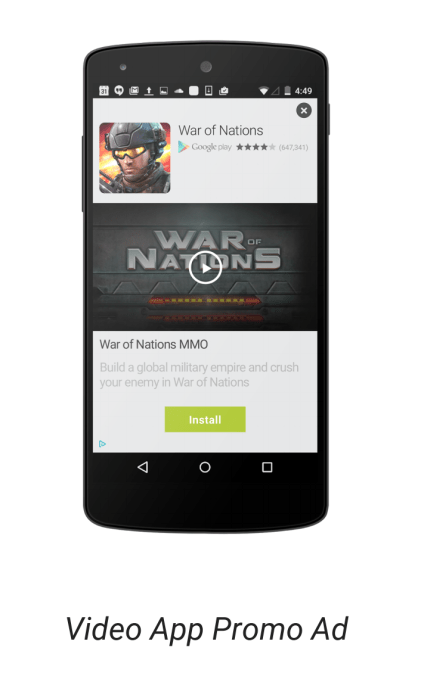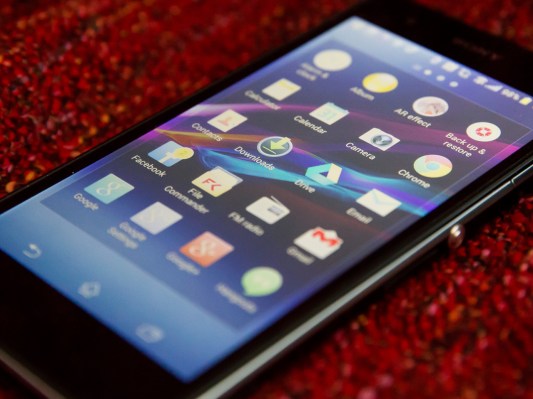Google announced this morning a range of new advertising options for Android app developers designed to increase the number of app installations. The most notable change rolling out today is that developers can now more easily advertise their applications on the Google Display Network, including via video app promo ads.
The Google Display Network today reaches 2 million publisher websites, notes Google, which means that developers will be able to advertise to potential users not only when they’re using other mobile applications, but also when they’re visiting mobile websites. Starting now, an added option that can be enabled with a click will allow developers to extend their current app install ads from the AdMob in-app network, which reaches 650,000 active apps, to the mobile GDN.
Google says that this option was in testing prior to today’s launch, and early adopters saw their app install volume increase by 28% on average. However, the company declined to share the number of testers involved, so it’s difficult to say how relevant this metric is at this time.
Another change arriving today is the ability for mobile developers to advertise in-app with Video App Promo Ads. Similar to the video promos that run in the app stores today, these are immersive, but interstitial, video ads that can show users what a mobile app or game looks like with more detail than what would be provided by a screenshot alone. Developers can even re-use the same videos they’ve created for use in the Play Store, if they choose.
 One early tester for this ad format as well as the GDN was GREE International, which promoted games like “Knights & Dragons” and “War of Nations,” for example. That company says it increased app install ads by 81% after extending its ads to the mobile GDN. Meanwhile, it found that in-app video ads had a 10% higher install rate and 40% lower cost-per-install rate compared with its internal benchmark data on other ad formats.
One early tester for this ad format as well as the GDN was GREE International, which promoted games like “Knights & Dragons” and “War of Nations,” for example. That company says it increased app install ads by 81% after extending its ads to the mobile GDN. Meanwhile, it found that in-app video ads had a 10% higher install rate and 40% lower cost-per-install rate compared with its internal benchmark data on other ad formats.
Google didn’t offer data beyond this one case study on the effectiveness of its in-app video ads, and also didn’t reveal the number of early testers here.
Finally, Google says it’s also introducing a new “Conversion Optimizer” for in-app buyers, which is a tool that’s designed to help publishers better target “high-value” users. As anyone in the mobile industry could tell you, raw numbers of app installs alone are not enough – 80% of installed apps only get used once, says Google. That means publishers’ real goal is to reach the smaller percentage of users who will re-engage with the app over a longer period of time, and help the company generate revenue through in-app purchases.
The Conversion Optimizer uses data and insights about paid app installs and in-app purchases from the Google Play app store to understand which users will be more valuable. It then optimizes its automated bidding for each user depending on the varying levels of in-app purchase probability after installing a developer’s app. Mobile marketing firm Fiksu tested this new bid strategy, it says, and in at least one case, tripled a client’s install-to-purchase conversion ratio and decreased the cost per purchaser by 61%.
The idea with the Conversion Optimizer is to fully automate reaching potential app users, so there’s no longer much a developer has to do by way of adding manual targeting. There’s no reporting or insights that ship with this feature, but it would make sense for a certain kind of mobile developer – for example, a gaming developer who’s new to automated bidding, but wants to increase their in-app purchases.
All three of these new additions are rolling out today.
